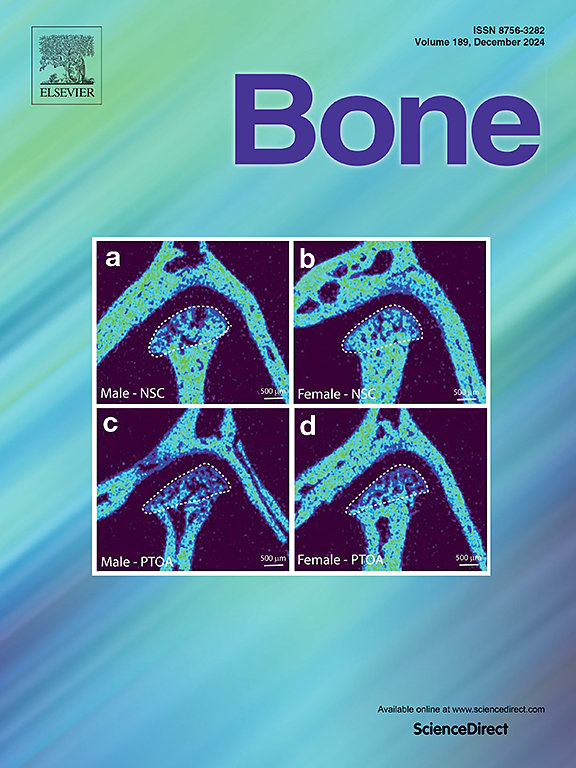基于拉曼光谱和深度学习的下颌骨坏死无标记快速诊断
IF 3.6
2区 医学
Q2 ENDOCRINOLOGY & METABOLISM
引用次数: 0
摘要
目的建立准确、高效的区分药物相关性颌骨坏死、放射性颌骨坏死和正常骨组织的诊断框架,为临床决策和有针对性的治疗干预提供依据。方法采用拉曼光谱法测定90份骨组织样品(MRONJ 30份,ORN 30份,对照30份)的骨矿物组成、有机基质含量和结晶度。每个下颌骨进行了10次随机光谱采集,在200-2200 cm−1范围内获得900个光谱。原始光谱数据采用Labspec6软件(Horiba Scientific)进行预处理。采用主成分分析(PCA)和线性判别分析(LDA)进行特征提取和分类。此外,采用ResNet18深度学习架构来提高诊断准确性。模型的性能通过精度、召回率和接收者工作特征曲线下的面积来评估,以确保鲁棒性。结果PCA-LDA整合对MRONJ、ORN和健康骨的区分准确率为90.3%,留一交叉验证的分类稳健性为89.1%。此外,ResNet18深度学习模型在验证集上的准确率为0.926±0.024,精密度为0.924±0.026,召回率为0.926±0.024,AUROC为0.985±0.007。这些发现强调了将拉曼光谱与先进的深度学习技术结合起来作为一种快速、无创和高度可靠的诊断工具的巨大潜力。这种方法不仅提高了区分MRONJ和ORN的能力,而且在临床实践中为改善患者管理和治疗结果提供了实质性的意义。本文章由计算机程序翻译,如有差异,请以英文原文为准。

Label-free rapid diagnosis of jaw osteonecrosis via the intersection of Raman spectroscopy and deep learning
Objectives
To establish a precise and efficient diagnostic framework for distinguishing medication-related osteonecrosis of the jaw, radiation-induced osteonecrosis of the jaw, and normal bone tissue, thus enhancing clinical decision-making and enabling targeted therapeutic interventions.
Methods
Raman spectroscopy was applied to investigate bone mineral composition, organic matrix content, and crystallinity in ninety bone tissue samples (30 MRONJ, 30 ORN, 30 control). Each mandible underwent 10 randomized spectral acquisitions, yielding 900 spectra across 200–2200 cm−1. The raw spectral data were preprocessed using Labspec6 software (Horiba Scientific). Principal component analysis (PCA) and linear discriminant analysis (LDA) were employed for feature extraction and classification. Additionally, a ResNet18 deep learning architecture was employed to enhance diagnostic accuracy. The model's performance was evaluated using precision, recall, and the area under the receiver operating characteristic curve to ensure robustness.
Results
The PCA-LDA integration achieved 90.3 % accuracy in differentiating MRONJ, ORN, and healthy bone, with leave-one-out cross-validation confirming 89.1 % classification robustness. Furthermore, the ResNet18 deep learning model outperformed traditional classification methods, achieving 0.926 ± 0.024 accuracy, 0.924 ± 0.026 precision, 0.926 ± 0.024 recall, and 0.985 ± 0.007 AUROC on the validation set.
Significance
These findings underscore the significant potential of combining Raman spectroscopy with advanced deep learning techniques as a rapid, noninvasive, and highly reliable diagnostic tool. This approach not only enhances the ability to differentiate between MRONJ and ORN but also offers substantial implications for improving patient management and therapeutic outcomes in clinical practice.
求助全文
通过发布文献求助,成功后即可免费获取论文全文。
去求助
来源期刊

Bone
医学-内分泌学与代谢
CiteScore
8.90
自引率
4.90%
发文量
264
审稿时长
30 days
期刊介绍:
BONE is an interdisciplinary forum for the rapid publication of original articles and reviews on basic, translational, and clinical aspects of bone and mineral metabolism. The Journal also encourages submissions related to interactions of bone with other organ systems, including cartilage, endocrine, muscle, fat, neural, vascular, gastrointestinal, hematopoietic, and immune systems. Particular attention is placed on the application of experimental studies to clinical practice.
 求助内容:
求助内容: 应助结果提醒方式:
应助结果提醒方式:


